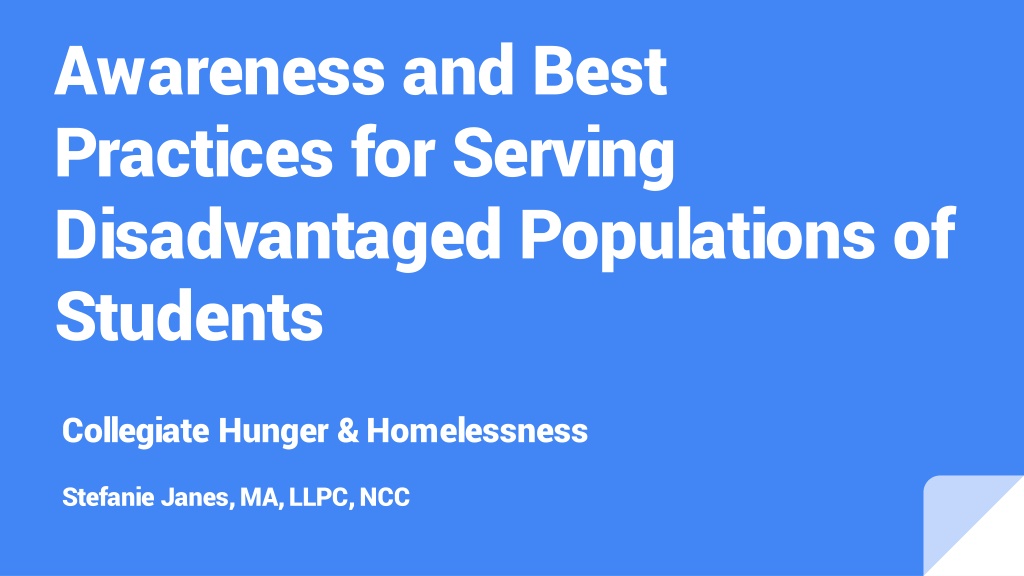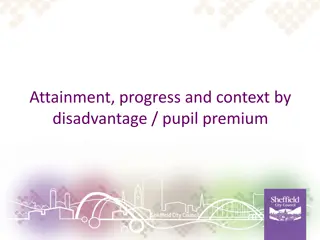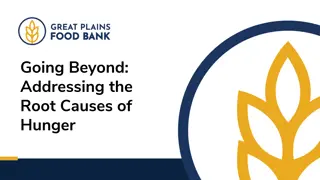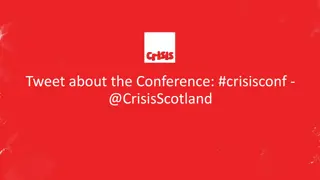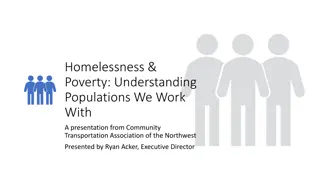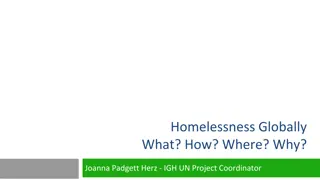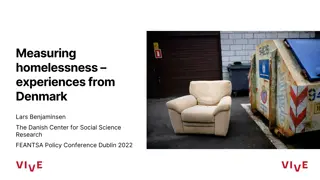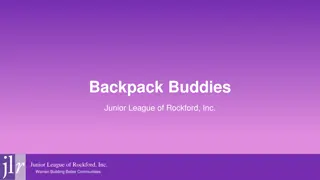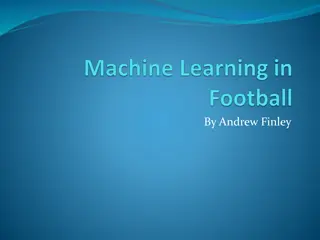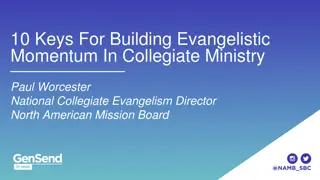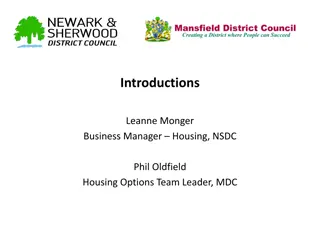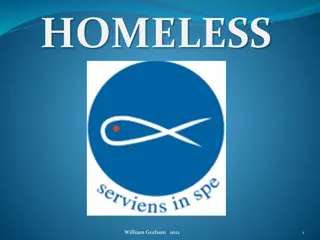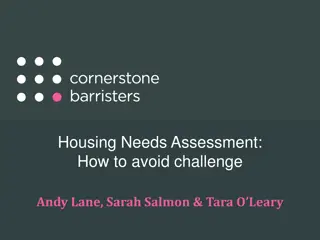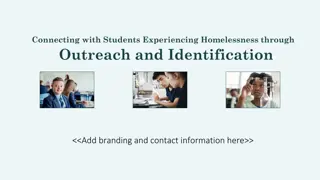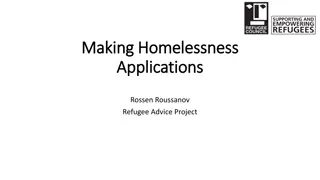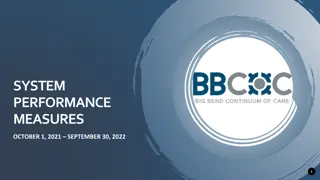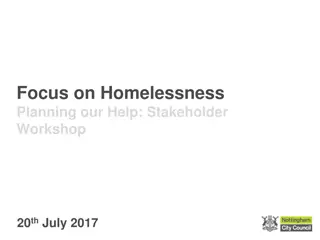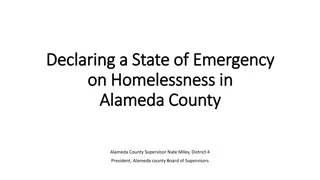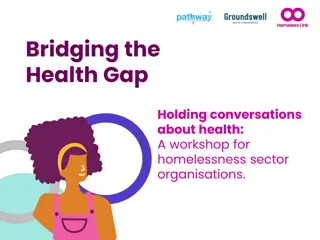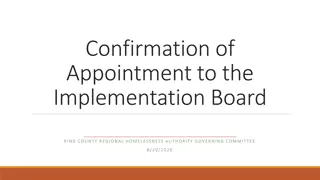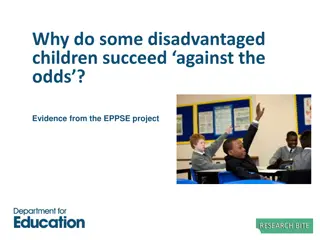Understanding Collegiate Hunger and Homelessness Among Disadvantaged Student Populations
This collection of resources sheds light on the challenges faced by disadvantaged students in terms of collegiate hunger and homelessness. It discusses the myth of meritocracy, the importance of self-awareness, and presents insights from the "Hunger on Campus Report," highlighting food security levels, responses to food insecurity, and variations based on race/ethnicity and parental education.
Uploaded on Sep 23, 2024 | 0 Views
Download Presentation

Please find below an Image/Link to download the presentation.
The content on the website is provided AS IS for your information and personal use only. It may not be sold, licensed, or shared on other websites without obtaining consent from the author. Download presentation by click this link. If you encounter any issues during the download, it is possible that the publisher has removed the file from their server.
E N D
Presentation Transcript
Awareness and Best Practices for Serving Disadvantaged Populations of Students Collegiate Hunger & Homelessness Stefanie Janes, MA, LLPC, NCC
The Myth of Meritocracy Idea that anyone can pull themselves up by their own bootstraps If everyone just puts in effort, gets up and goes to work everyday, they can have the American Dream. If I can do it, anyone can do it This does not take into account factors such as race, socioeconomic class or gender which factor into each group s starting point.
Self awareness Privilege Walk Activity Discussion
Hunger on Campus Report A collaboration between: College and University Food Bank Alliance, National Student Campaign Against Hunger and Homelessness, Student Government Resource Center, Student Public Interest Research Groups Published October 2016 Surveyed 3,800 students in 12 states at 8 community colleges and 26 four-year universities
Hunger on Campus Report: Food Security Level of Survey Respondents in Last 30 Days FOOD SECURITY SCORE Zero (High food security) 31% 1-2 (Marginal food security) 21% 3-5 (Low food security) 26% 6-10 (Very low food security) 22% Hunger on Campus Report, Table 1, October 2016
Hunger on Campus Report: Responses to Initial Food Security Questions, Last 30 Days Sometimes True Often True I worried whether my food would run out before I got money to buy more 38% 16% 35% 11% The food that I bought just didn t last, and I didn t have money to get more. 36% 18% I couldn t afford to eat balanced meals. Hunger on Campus Report, Table 2, October 2016
Hunger on Campus Report: Food Security Levels by Race/Ethnicity and Parental Education Food Security Level High Marginal Low Very Low Race/Ethnicity White 38% 21% 23% 17% Asian 34% 22% 28% 17% Hispanic or Latino 22% 22% 31% 25% Black or African American 22% 23% 29% 28% Parental Education Neither parent attended college 22% 21% 25% 31% At least one parent attended some college 34% 22% 26% 19% Hunger on Campus Report, Table 4, October 2106
Hunger on Campus Report: Housing Insecurity Among Students, Last 12 Months 48% of all students experienced any of the following: Difficulty paying rent, mortgage, utility bills Borrowed money from friends or family to help pay bills Moved in with others to relieve financial burden Moved more than 2 times per year 9% of all students experienced any of the following: Evicted or thrown out Stayed in a shelter, or any other place not meant for regular housing Didn t know where they were going to sleep that night
Closer to Home Story in December 2015 about a 3.4 GPA student from Eastern Michigan University who was living in his van and did not have access to sufficient amounts of food. He works two part-time jobs, but it only covers his cost of tuition, not a place to live. While he is accessing resources at EMU, the university does not receive enough grant money for situations such as these.
Implications of these Statistics Hunger and/or housing problems impact students education. Missing classes & study groups Missing club meetings or opting not to join at all Not able to buy textbooks Dropping classes Unable to perform well as they otherwise could have without hunger and housing problems
But...what about...? meal plans? getting a part-time job? financial aid?
Bigger Implications College is no longer affordable for many populations Lower rates of graduation which means low-income students remain in the cycle of poverty Bachelor degrees are worth less for students who come from low-income backgrounds
How can we help? Get to know students personally -establish a relationship when possible Ask students what their plans are for breaks, or ask how their break was Check up with students to make sure they continuously are taking advantage of resources. Show compassion and unconditional positive regard for each student. Keep an open mind and approach each student as a new situation.
More ways to help Keep a stash of snacks for students available in your office if possible Refer students to the Dean of Students for longer-term resources Refer students to Financial Aid for possible resources they may not be aware of Maintain awareness of this issue through consuming news and pass awareness along
References Dubick, J., Mathews, B., Cady, Clare. (2016). Hunger on campus: The challenge of food insecurity for college students. Retrieved from https://studentsagainsthunger.org/hunger- on-campus/ French, R. (2015). He s a college senior with a 3.4 GPA. And he s homeless. Bridgemi.com.Retrieved from http://bridgemi.com/2015/12/ hes-a-college-senior-with-a-3-6-gpa- and-hes-homeless/ Hershbein, B. (2016). A college degree is worth less if you are raised poor. Brookings.edu. Retrieved from https://www.brookings.edu/blog/ social-mobility-memos/2016/02/19/ a-college-degree-is- worth-less-if-you-are-raised-poor/
